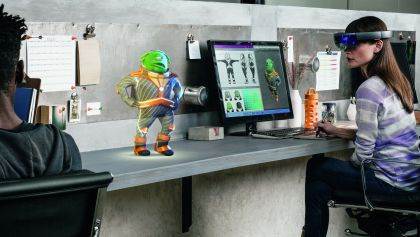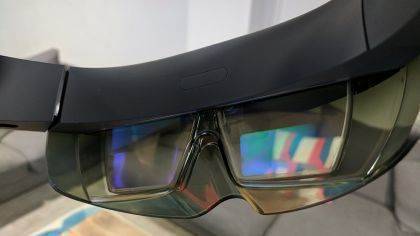Once a concept reserved for the annals of science fiction, augmented reality technology is now firmly available in real life and is being hailed as the future of computing by tech luminaries like Mark Zuckerberg, Tim Sweeney and others.
While most people's exposure to AR has been through disposable gimmicks like Pokemon Go and Snapchat filters, the technology has received a significant amount of attention from major tech firms. Microsoft in particular is betting big on augmented, virtual and mixed reality technologies.
"Microsoft has been very clear, from Satya right down, in articulating that mixed reality is the future of computing," Leila Martine, Microsoft UK's director of new devices, tells IT Pro, "and when you think about it, that is a really ambitious statement."
For Microsoft, mixed reality represents the full spectrum of how the real and digital worlds can be melded. At one end are devices like HoloLens, its $4369 headset (developer version) that projects digital images onto a real-world view of your surroundings, while at the other are fully-immersive VR headsets like the Oculus Rift. While the two categories are currently fairly separate, Microsoft envisions a future in which they meet in the middle and has built Windows 10 with this in mind.

Compared to more well-known and consumer-friendly VR technology, the augmented reality market has been much slower to take off. With just 100,000 units sold last year, analyst house CCS Insights doesn't expect the AR industry to start racking up significant sales until 2019.
Part of this is because AR has more business applications, explains the firm's chief of research, Ben Wood: "The focus on enterprise uses and vertical market opportunities means longer sales cycles, exacerbated by the complexities of integration and compliance in workplaces."
However, AR adoption is facing other teething troubles as well; according to Martine, one of the main problems is simply showing companies that this technology actually exists.
"I think the challenge isn't so much the use cases that are not getting as much attention," she tells IT Pro, "it's really getting a lot of companies to recognise that this isn't science fiction, and that it's actually science fact."

Like VR technologies, Martine says that once companies actually try HoloLens, they usually experience "penny-drop" moments, where they realise the potential of the technology. The most common example of this is apparently Skype, where the benefits of being able to support less experienced field-based staff with real-time remote support from battle-hardened veterans is both widely-applicable and highly valuable.
According to Martine, once a company has piloted HoloLens on one project, it's easier to roll it out on a much larger basis. "What we're seeing with a lot of companies is they'll start off with one specific area, but... when they get through their first proof-of-concept that turns into a pilot that turns into reality, and their companies start to really understand the technology... then they start being able to [use] it in lots of other projects," she says.
So far, HoloLens has seen a significant amount of interest from manufacturing, engineering and architecture firms in the private sector, which are exploring use-cases centred around training, modelling and prototyping. Martine also says there's also a substantial application for HoloLens in the public sector, including health and education, and it has also stoked interest among various government bodies.
"Education is one of the largest vertical segments and probably higher than I had actually anticipated," she tells IT Pro. "So between all of those traditional government bodies that you would think, plus potential within health and education - those are all really big on the public sector side."

As an emerging technology that's been in the wild barely over a year, AR is still finding its feet within the marketplace. However, rather than immediately trying to sell HoloLens to as many customers as possible, Microsoft is very much playing the long game, putting its efforts into selling augmented reality as a platform.
"Making sure that the devs are coming back every day, and [both they and customers are] building... is the barometer of the things that I get pressured on and that we get pressured on - that we've got more partners coming into the ecosystem," Martine explains.
Part of the company's plan for this is engaging directly with developers. It's putting huge amounts of resources online for developing holographic apps and is open sourcing a lot of code related to HoloLens and holographic development.
"We have developer teams at Microsoft all over in our key markets right now that are working with ISVs and key developers around helping them to do hackathons, to help them to build their solutions," says Martine.

For Microsoft, building out AR as a platform is crucial. The technology's still in its infancy and history is littered with technologies that have been undermined by the lack of a strong portfolio of apps and solutions to support them. Without a strong ecosystem behind it, there's every chance that augmented reality could share the same fate.
"The thing that's most important for me is, the more we can have the customers being the ones that tell you the stories and tell you about the potential, is the best testament of where it's going," Martine says. "Because I really do believe the power is in what companies can do with it."
"We're a technology, we enable, and if we can enable better health, better policing, enable people to have better experiences and to have more fun - that's pretty awesome."






_(11).jpg&h=142&w=230&c=1&s=1)



.jpg&w=100&c=1&s=0)
_(8).jpg&w=100&c=1&s=0)









.jpg&q=95&h=298&w=480&c=1&s=1)


